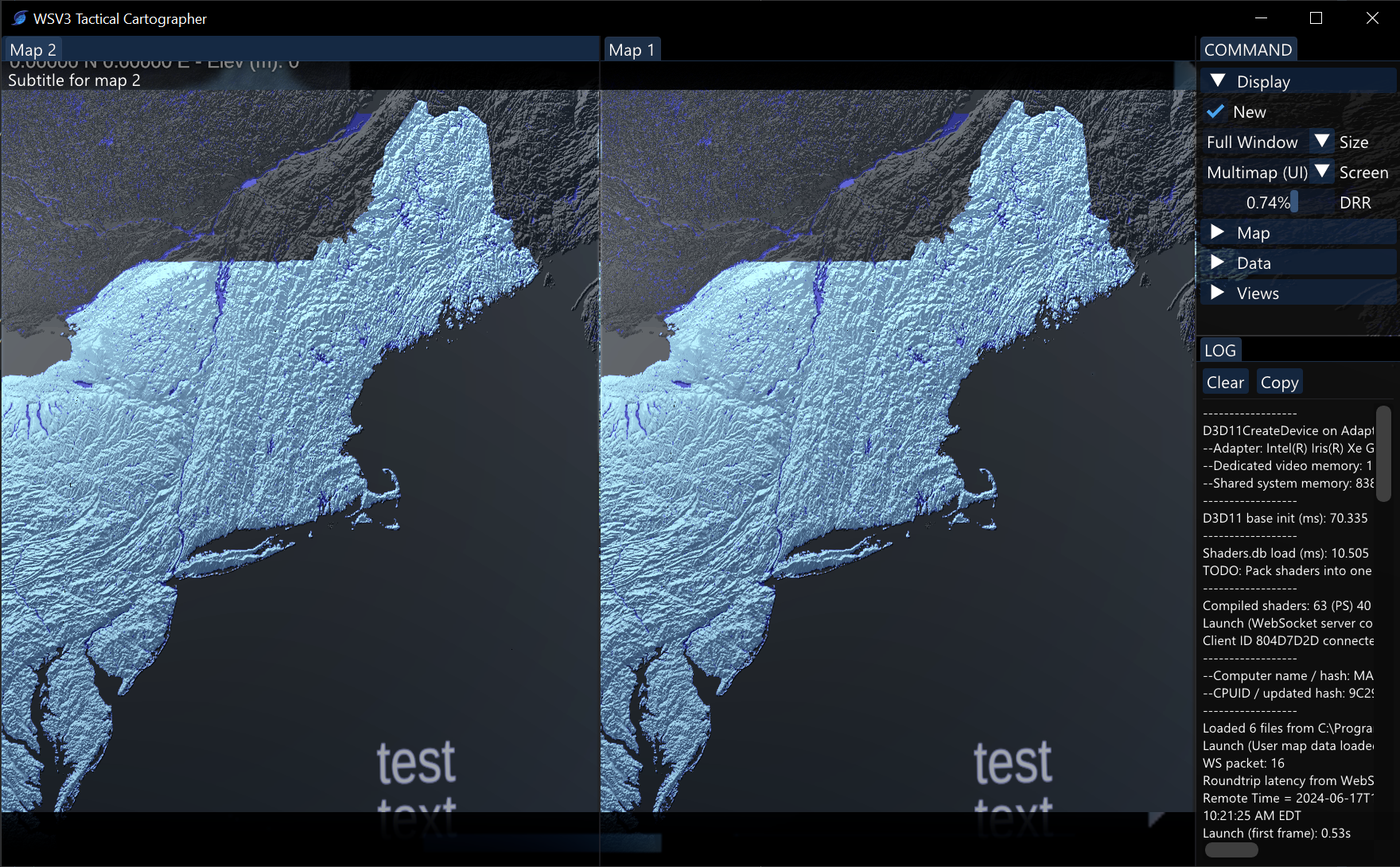As a result of the major beneficial refactoring (which adds 1 - 2 months of work before I can resume work on the core raster and vector content rendering engines), I am likely abandoning the idea of intra-map quad/dual parameter display. Instead I think there should be one high-level display mode selection wherein quad panel is actually Map 1-4 (separate "maps") and a flexible multimap mode allows the user to dock/tab/orient/resize/drag map window panels at liberty.
This reduces more complexity than it adds, but it does add the complexity of allowing the user to customize synchronization between dual/quad map panels.
Back in the original design where one single map could have intra-map same-view parameter display, the camera view/probe tool/timeline state/style would have all automatically synced across the 2/4 param display within that particular map.
Now since I am abandoning the "intra-map multi-parameter" concept and simplifying to a high-level selection of "single map, dual map, quad map, custom windowed multimap" (or something similar), this means there should be flexible controls for when the user wants to synchronize camera/style/timeline state.
I think it can be as simple as checkboxes in dual or quad mode for synchronizing each category. If you have a quad panel display, you probably want either all 4 to synchronize or none to synchronize, so you can take advantage of the unique ability for multiple maps with distinct camera views, timeline states, and even styles. This is incredibly powerful.
If there is a need for, e.g., keeping the top two panels in quad display automatically synced but the bottom two non-synced and independent, then the necessary extra UI controls allow these complex options can be safely hidden under the multi-level collapsible "COMMAND" side menu you see in the screenshots above, which is super easy and fast to navigate on a laptop using two-finger up/down scrolling. But the common case is that the user either wants them all synced (4 maps only differing in data parameter but not view/timeline/style), or complete independence between maps.
Ideas/comments/discussion/user requirements welcome.
